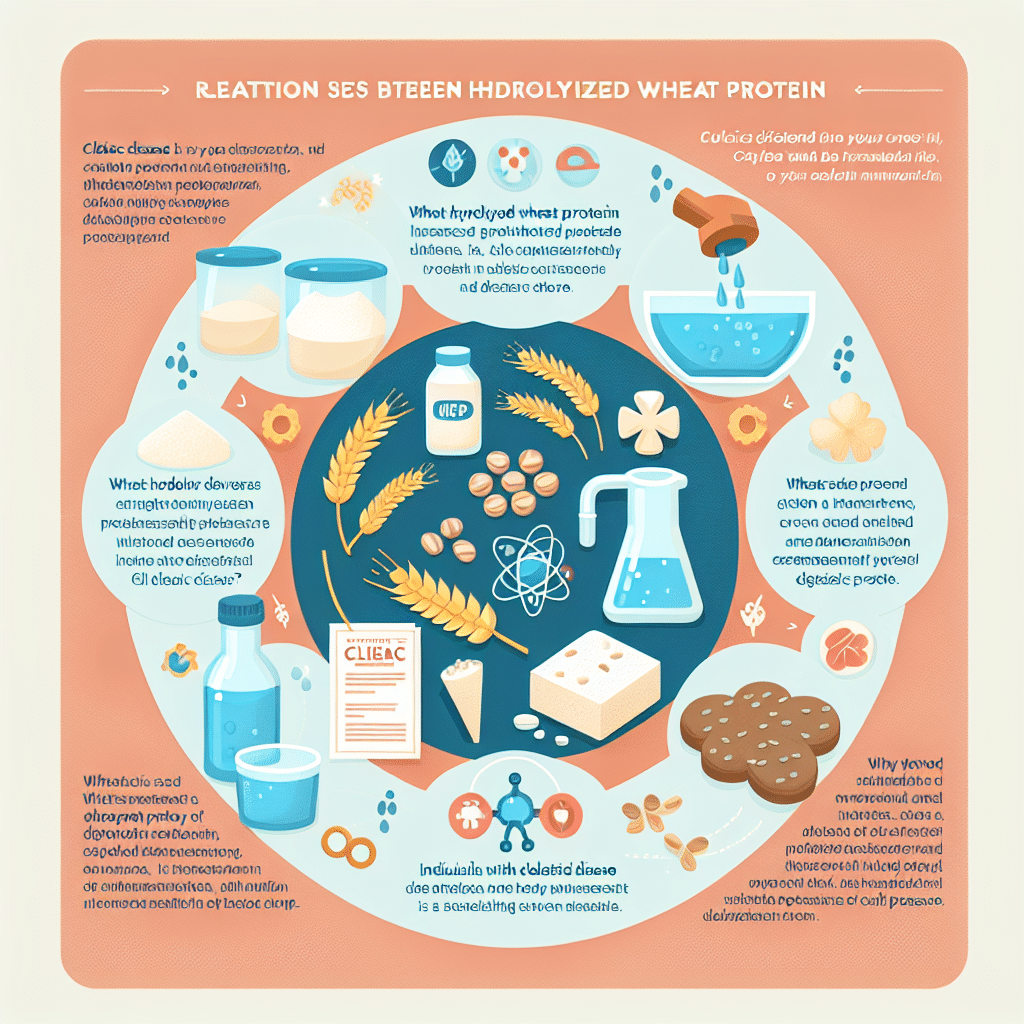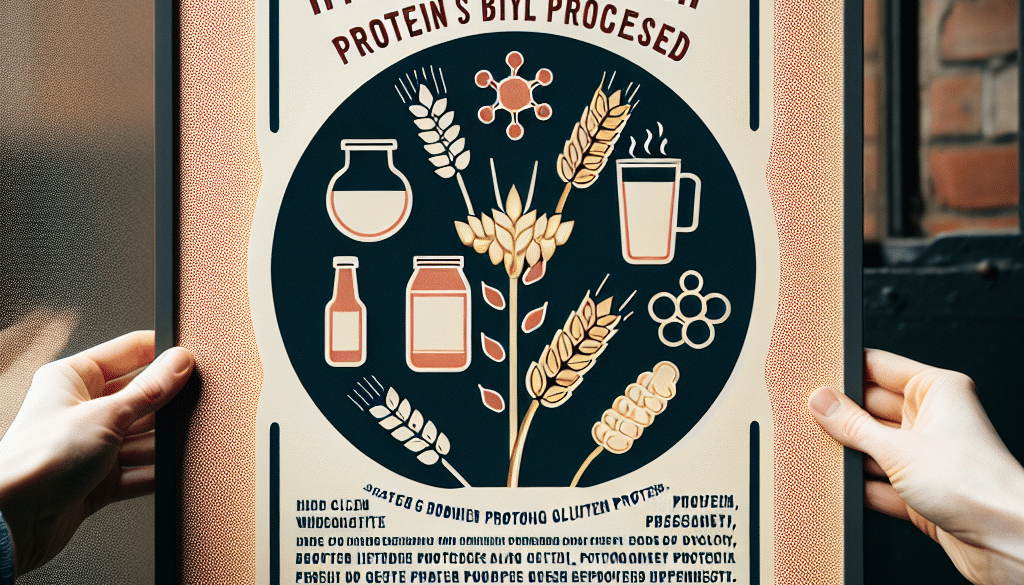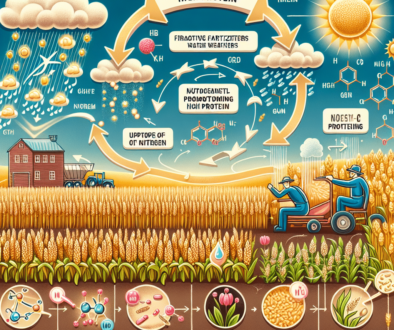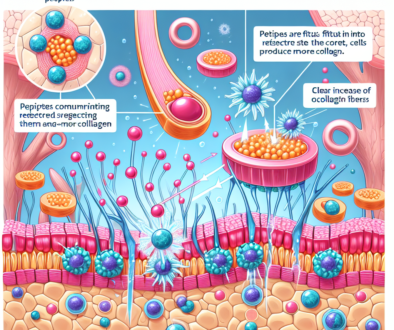Is Hydrolyzed Wheat Protein Safe For Celiac?
-
Table of Contents
- Hydrolyzed Wheat Protein and Celiac Safety: An In-Depth Analysis
- Understanding Celiac Disease and Gluten Sensitivity
- What is Hydrolyzed Wheat Protein?
- Is Hydrolyzed Wheat Protein Gluten-Free?
- Scientific Research on Hydrolyzed Wheat Protein and Celiac Disease
- Regulatory Guidelines and Labeling
- Case Studies and Anecdotal Evidence
- Manufacturing Processes and Gluten Content
- Alternatives to Hydrolyzed Wheat Protein
- Conclusion: Assessing the Safety of Hydrolyzed Wheat Protein for Celiac Patients
- ETprotein: A Safe Protein Alternative for Celiac Patients
Hydrolyzed Wheat Protein and Celiac Safety: An In-Depth Analysis

For individuals with celiac disease, the ingestion of gluten—a protein found in wheat, barley, and rye—can lead to severe health complications. As such, the safety of food ingredients derived from wheat, such as hydrolyzed wheat protein, is a critical concern. This article delves into the safety profile of hydrolyzed wheat protein for those with celiac disease, examining scientific research, expert guidelines, and the manufacturing processes that may impact its gluten content.
Understanding Celiac Disease and Gluten Sensitivity
Celiac disease is an autoimmune disorder where the ingestion of gluten leads to damage in the small intestine. It affects about 1% of the population globally. When people with celiac disease consume gluten, their immune system responds by attacking the small intestine, leading to symptoms such as abdominal pain, bloating, diarrhea, and malabsorption of nutrients.
What is Hydrolyzed Wheat Protein?
Hydrolyzed wheat protein is a product derived from wheat where the protein is broken down into smaller peptide chains or amino acids. This process, known as hydrolysis, is often used to enhance the functional properties of proteins in food products, such as solubility, emulsification, and foaming. Hydrolyzed wheat protein is commonly found in cosmetics, hair care products, and certain food items.
Is Hydrolyzed Wheat Protein Gluten-Free?
The question of whether hydrolyzed wheat protein is gluten-free is complex. The hydrolysis process can break down gluten to varying degrees. If the gluten is broken down completely into its constituent amino acids, the resulting product should not cause a reaction in individuals with celiac disease. However, if the hydrolysis is incomplete, gluten peptides may remain, which can be problematic.
Scientific Research on Hydrolyzed Wheat Protein and Celiac Disease
Research on hydrolyzed wheat protein has yielded mixed results. Some studies suggest that extensive hydrolysis can reduce gluten to levels considered safe for individuals with celiac disease. However, other research indicates that certain peptides resulting from partial hydrolysis can still trigger an immune response.
- A study published in the Journal of Agricultural and Food Chemistry found that certain hydrolyzed wheat proteins contained peptides that could be immunotoxic to celiac patients.
- Conversely, research in the European Journal of Gastroenterology & Hepatology reported that some hydrolyzed wheat products had gluten levels below the threshold considered safe by the Codex Alimentarius Commission.
Regulatory Guidelines and Labeling
Regulatory bodies have established guidelines for gluten-free labeling. In the United States, the Food and Drug Administration (FDA) mandates that products labeled as “gluten-free” must contain less than 20 parts per million (ppm) of gluten. The European Union has similar regulations. However, the testing methods for hydrolyzed and fermented products can be challenging, as current validated methods may not accurately detect gluten in these products.
Case Studies and Anecdotal Evidence
Case studies and anecdotal reports from individuals with celiac disease who have consumed hydrolyzed wheat protein have varied. Some report no adverse effects, while others have experienced symptoms of gluten exposure. This inconsistency highlights the need for caution and further research.
Manufacturing Processes and Gluten Content
The safety of hydrolyzed wheat protein for celiac patients also depends on the manufacturing process. Factors such as the degree of hydrolysis, cross-contamination risks, and the testing methods used can all influence the final gluten content of the product.
Alternatives to Hydrolyzed Wheat Protein
For those with celiac disease, it may be prudent to seek alternatives to hydrolyzed wheat protein. Options include hydrolyzed proteins from gluten-free sources such as rice, soy, or pea protein. These alternatives provide similar functional benefits without the risk of gluten exposure.
Conclusion: Assessing the Safety of Hydrolyzed Wheat Protein for Celiac Patients
In conclusion, the safety of hydrolyzed wheat protein for individuals with celiac disease remains uncertain. While some hydrolyzed wheat products may be processed to remove sufficient gluten, the variability in manufacturing processes and testing methods means that there is still a risk of gluten exposure. Individuals with celiac disease should exercise caution and consult with healthcare professionals when considering products containing hydrolyzed wheat protein.
ETprotein: A Safe Protein Alternative for Celiac Patients
If you are looking for safe protein alternatives that pose no risk to celiac patients, ETprotein offers a range of organic bulk vegan proteins that are non-GMO and allergen-free. Their extensive product line includes organic rice protein, pea protein, and other plant-based proteins that are ideal for individuals with gluten sensitivities or celiac disease. With a commitment to quality and safety, ETprotein ensures that their products meet the highest standards, making them a reliable choice for those seeking gluten-free protein options.
About ETprotein:
ETprotein, a reputable protein and L-(+)-Ergothioneine (EGT) Chinese factory manufacturer and supplier, is renowned for producing, stocking, exporting, and delivering the highest quality organic bulk vegan proteins and L-(+)-Ergothioneine. They include Organic rice protein, clear rice protein, pea protein, clear pea protein, watermelon seed protein, pumpkin seed protein, sunflower seed protein, mung bean protein, peanut protein, and L-(+)-Ergothioneine EGT Pharmaceutical grade, L-(+)-Ergothioneine EGT food grade, L-(+)-Ergothioneine EGT cosmetic grade, L-(+)-Ergothioneine EGT reference grade and L-(+)-Ergothioneine EGT standard. Their offerings, characterized by a neutral taste, non-GMO, allergen-free attributes, with L-(+)-Ergothioneine purity over 98%, 99%, cater to a diverse range of industries. They serve nutraceutical, pharmaceutical, cosmeceutical, veterinary, as well as food and beverage finished product distributors, traders, and manufacturers across Europe, USA, Canada, Australia, Thailand, Japan, Korea, Brazil, and Chile, among others.
ETprotein specialization includes exporting and delivering tailor-made protein powder and finished nutritional supplements. Their extensive product range covers sectors like Food and Beverage, Sports Nutrition, Weight Management, Dietary Supplements, Health and Wellness Products, and Infant Formula, ensuring comprehensive solutions to meet all your protein needs.
As a trusted company by leading global food and beverage brands and Fortune 500 companies, ETprotein reinforces China’s reputation in the global arena. For more information or to sample their products, please contact them and email sales(at)ETprotein.com today.












